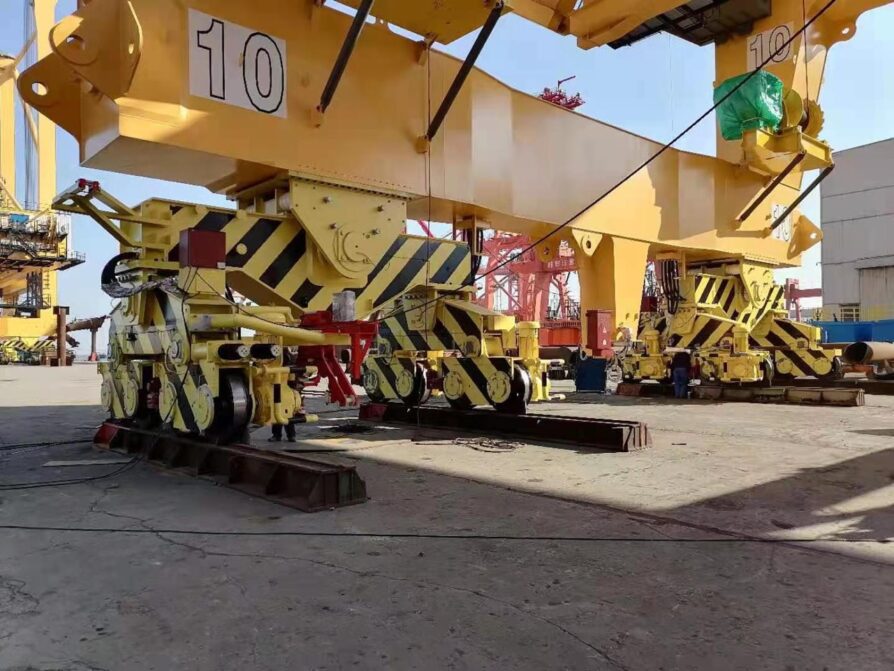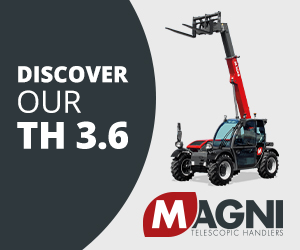)
CP&A’s seismic upgrade concept for ship-to-shore cranes
CP&A, which has been using nonlinear time history analysis (NLTHA) for research and engineering projects since 1991, offers a wide variety of heavy-duty industrial services, including procurement, specification, design, manufacturing review, modification, and accident investigation.
BASIS is built on NLTHA and can protect the crane main structure from damage even in contingency level earthquakes. BASIS has been successfully installed and commissioned on new ship-to-shore container cranes in major seismic zones, but can be used for other gantry cranes, such as ship loaders, ship unloaders, or rail-mounted gantry (RMG) cranes.
Richard Phillips, mechanical engineer at CP&A, says “The current crane industry standards for structure design accepts two level of earthquakes: the crane will be back to service quickly for operating level (small) earthquakes; it can be severely damaged but not collapse during contingency level (major) earthquakes. After BASIS is introduced, the crane can be designed for no plastic structural deformations during a major seismic event. Therefore, the crane can be back to service quickly during both operating level and contingency level earthquakes.”
Ship-to-shore cranes play a vital role in transporting goods and material during normal times; this role becomes greatly magnified in the aftermath of a major seismic event. After an earthquake, the crane is inspected and assessed for operability. If damage is found, a repair plan is created and carried out before the crane is tested and recertified. Major terminal operators are therefore increasingly looking to protect their cranes from damage.
Phillips says, “There are different scenarios where someone may want to retrofit; they might be moving cranes to a port in a higher seismic zone. Another possible scenario is that the client is raising the cranes to accommodate larger vessels. Raising the cranes increases the height of the centre of mass, which is generally unfavourable for seismic activity. The client may also want to upgrade their cranes to be able to operate right after an earthquake.
“Cranes do not need to be operational after an earthquake; they can be damaged, but they cannot collapse. Basically, they need to be able to get the operator and other workers safely off the crane so it can be repaired or scrapped,” he added.
BASIS for installation
BASIS is installed between the sill beam and main equalizer beam, about 13ft (4m) to 16ft (5m) from ground level depending on the crane’s size. It includes two friction damper assemblies, two energy restoring device assemblies, a guiding device, and two friction damper locking devices. Central to the retrofit is replacement of the main equalizer beam with a new one that can fit the BASIS system. The notched main equalizer beam can be designed to match the strength of the existing beam and allow the system to fit without changing the height of the crane.
CP&A must be constantly mindful to maintain crane height and minimise on-site works. The main equaliser beam, remember, is the primary beam that equalises the wheel loads at each corner. This ensures the load is spread out evenly over the rail, which is better for the crane rail and dock. Retaining height reduces the amount of work that needs to be done. If the crane height is changed it creates work extending electrical systems, modifying walkways, and potentially modifying the elevator. Keeping the height the same makes this change as close to a drop in solution as you can get.
Phillips says, “After the design work has been done, step one of the retrofit process is to manufacture and assemble the new main equalizer and BASIS system. Once the parts are manufactured and tested offsite, they are delivered to the port. After mobilisation is completed, the crane is locked out. One-by-one, the corners are jacked up and the old main equaliser beam is removed, then any field modifications occur such as welding on new plates. Next, the new main equalizer and BASIS system are installed and inspected. Final testing is performed, and punch-list items are addressed before turnover.”
The total downtime for a single crane would be around two to three weeks.











